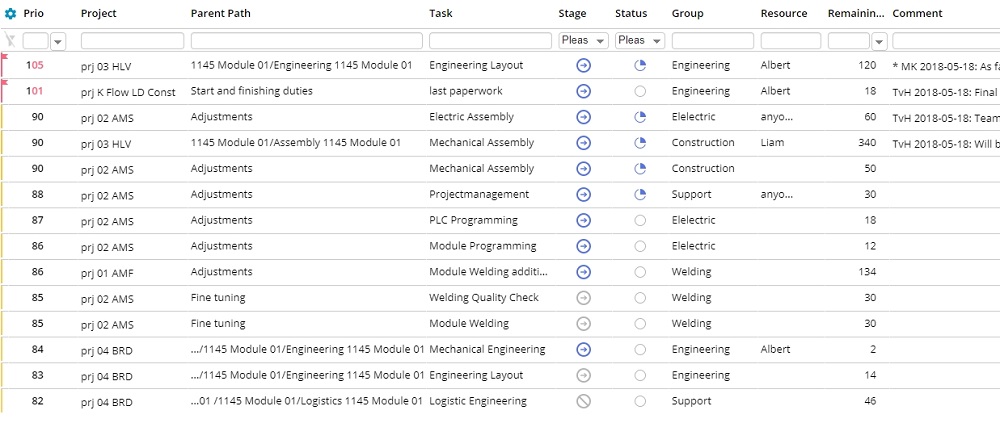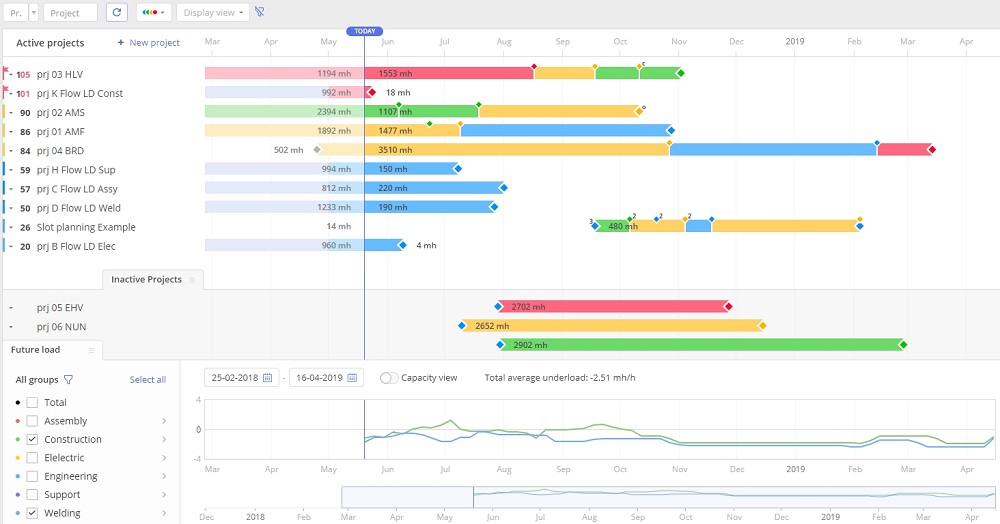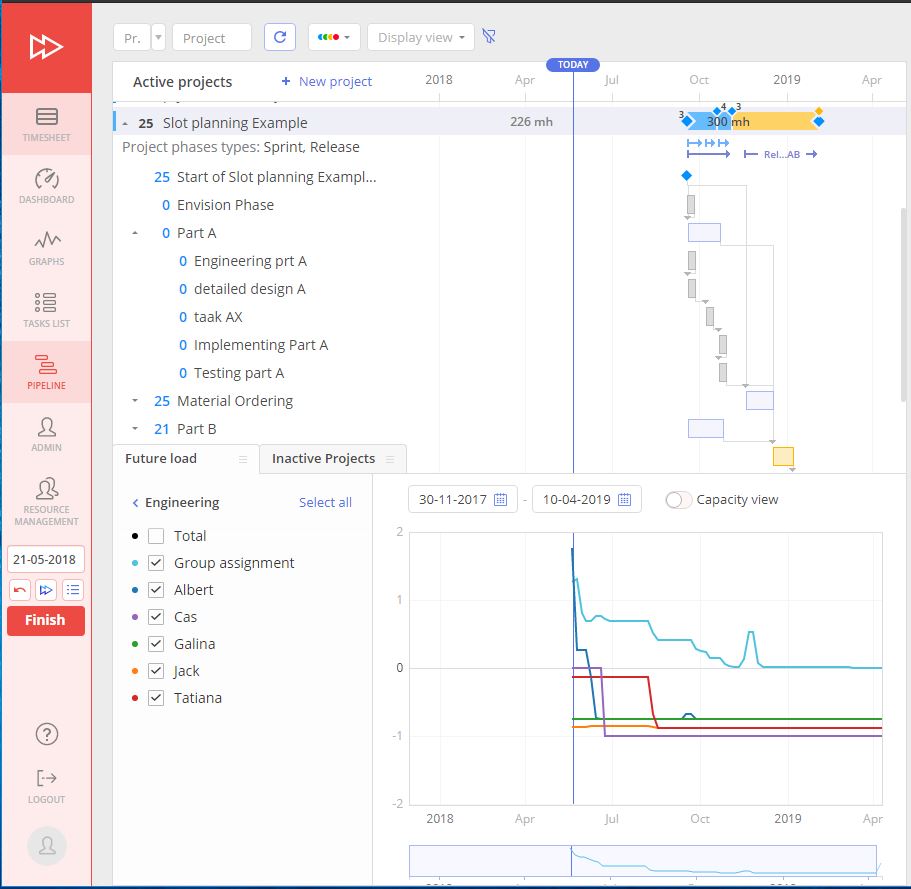In this article, we’ll consider the main characteristics of an implementation plan and provide you with some useful tips on how to create it.
A Project Implementation Plan: A General Overview
To increase the chances for success, especially when it comes to large and/or complex projects, the team may require additional guidance on the project execution process. An implementation plan can be used for this purpose.
In a nutshell, a project implementation plan is a document that serves as a roadmap of how the project is going to be executed. It specifies the steps on the way to project completion and describes how the project team will implement them; documents project goals; contains a list of project tasks with roles and responsibilities, necessary resources, and timelines.
An implementation plan is not the same as a project plan; however, they aren’t independent of each other: a project plan describes what has to be done, while an implementation plan shows how it will be performed.
Why is it important to create an implementation plan? Here are two convincing reasons for that.
- It serves as a roadmap for the project execution process making it clear and predictable for all its participants: they know exactly what they have to do, when, and how.
- It streamlines work on a project by keeping its team members on the same page and providing them with clarity and accountability as to their roles and responsibilities, facilitating effective communication and collaboration between them.
Now let’s consider what information is usually included into a project implementation plan.
What are the components of an implementation plan?
An implementation plan typically outlines the following information.
- Goals: when working on a project, it’s important to bear in mind what you are aiming to accomplish at the end.
- Implementation schedule: it allows to keep a project on track and contributes to timely delivery.
- Resources: an implementation plan should provide a clear overview of the resources (people, equipment, facilities) required for project execution.
- Roles and responsibilities: this section will give a general outline of who is responsible for specific project activities and what their contribution will be.
- Success metrics: they describe the KPIs to assess the progress of a project and determine how often this assessment will be performed.
- Contingency measures: it’s an essential part of the plan that describes the actions in case something unexpected occurs.
Read more: Dealing with Murphy’s Law in Project Management: How to Protect Your Projects from Failure
Steps to Create an Implementation Plan

Following the steps listed below will allow you to come up with a well-structured implementation plan.
Step 1: Document the goals
Apart from stating the goal you’re planning to achieve at the end, this step also involves explaining the mission statement of a project and listing the assumed risks. Think about possible risks to have more realistic expectations of what the final outcome will be (a more thorough risk assessment will be performed later). This step will be documented in the introduction to the implementation plan.
Step 2: Break down a project into tasks
Represent a project as a list of tasks that must be completed to ensure project delivery. Establish important milestones and due dates, set priorities.
Step 3: Define the team members’ roles and responsibilities
Outline all the participants belonging to the project team and assign the roles and responsibilities to them. Clearly defined roles make the whole implementation process more organized and transparent. Note that assigning roles is not the same as assigning tasks: a person may have one role, but perform several different tasks.
Step 4: Create a schedule
This schedule should be flexible and involve only milestones, not all the project tasks’ deadlines. Determining them can be ineffective: it may cause unnecessary delays and reduce employees’ efficiency due to student syndrome and Parkinson’s law effects. But scheduling milestones as a certain implementation timeline is important to keep the whole project on track and monitor the team’s progress.
Step 5: Think of possible risks
One of the prerequisites for successful project implementation is analyzing possible risks and being able to respond to them properly – it can protect a project against unexpected events.
Perform risk assessments together with the project team, analyze what consequences these risks will result in, think of the ways you’ll respond to them, and document all this information. It’s a good idea to use previous experience if you managed similar projects before.
Read more: Project Risk Management: Importance, Challenging Issues, Recommendations
Step 6: Assign resources
Assigning the right resources to the right tasks ensures efficient and effective work on a project. This section of the implementation plan aims to make sure that the project has all the necessary resources for successful implementation; it should answer the questions:
- Are there enough resources for completing project tasks?
- What equipment and facilities are required?
- Who has necessary skills and capacity for completing the tasks?
Read more: 4 Tips on Efficient Resource Allocation in a Multi-Project Environment
Step 7: Specify success metrics
Define what metrics you will use to assess progress (e.g. resource utilization rate, earned value, or others that will vary depending on the type of a project), and how often this assessment should be performed. It’s important that these metrics touch upon all sides of the project implementation process: schedule, scope, budget, and resource utilization.
These were the main blocks reflecting project implementation stages that should be included into a project implementation plan. And now, let’s consider some recommendations that will make the project implementation process more smooth and lead to better outcomes.
How to Make Project Execution Maximum Efficient: Epicflow’s Solution
Modern project and resource management software opens up numerous opportunities for making the project implementation process much more efficient. For example, you can get a comprehensive view of project workflow with all the tasks, milestones, and resources; improve resource allocation and manage team members’ competences; predict bottlenecks; automate some routine activities like compiling reports, and more. Let’s review how these capabilities contribute to more successful project implementation through the example of Epicflow, a multi-project resource management solution.
Why Epicflow? First, because it has been designed for a complex multi-project environment which is becoming more and more common for modern organizations. Second, because its capabilities cover all sides of the project and resource management process: from each employee’s task management to the efficient utilization of resources in an enterprise. Let’s take a closer look.
Task management: Prioritization capabilities

Epicflow sets task priorities with regard to dependencies between all projects in the pipeline and provides each team member with a prioritized list of assignments. The critical tasks are marked with colors depending on their urgency and given specific numbers indicating their priority so that everyone knows what to work on first. In addition, it’s updated automatically every time any changes occur. Prioritization is crucial for successful project implementation – it makes the workflow flexible, and whatever happens, the team members know what tasks matter most for the moment.
Project management: A comprehensive view of your project environment

Epicflow provides you with a bird’s eye view of all the projects running in an organization. They are marked with colors depending on their state. You can also review all your milestones and have an idea of problems in the workflow (if any). Thus, you can constantly monitor the project implementation process and timely detect bottlenecks.
Read more: Bubble Graph: Critical Chain Fever Chart Re-Imagined
Resource management: Ensuring your teams’ efficiency
Epicflow has a variety of resource management capabilities:
- it simplifies resource allocation by providing data on employees’ skills, availability, and capacity as well as suggest a team member for completing a certain task;
- it detects improper workload and related bottlenecks;
- it gives an idea of the output produced by a resource group and forecasts it for the future.
Therefore, it helps ensure efficient work of employees on all projects running at a company.
Risk management and decision-making

Analyzing risks and responses to them is one of the essential steps of creating an implementation plan. In addition to forecasting bottlenecks, Epicflow’s What-if Analysis can help you test responses to risk-bearing situations and consequences of other management decisions you may need to make. In such a way, you can make better decisions and respond more effectively to any issues arising in the project execution process.
Want to learn more about Epicflow’s features that facilitate successful implementation of all projects in your environment? Let us know by booking a call with our expert.








It is interesting; I will comment more after studying these few pages.